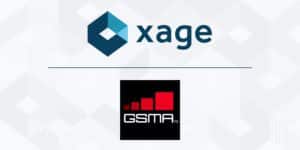
To rollout next-gen 5G, the telecommunications sector has its work cut out for it. Hardware and device manufacturers, software developers, internet providers, and carriers will all need to work together to arrive at this new age of increased networking and edge-heavy end user experiences. To this end, we’re seeing telecom giants enter a 21st century space race to see who can deliver on the promise of 5G and its implications in furthering IoT, first and foremost. Just last week, Sprint and Ericsson announced that they’ve teamed up on a new Internet of Things (IoT) initiative, aiming to bring a distributed IoT network and operating system to market. And this announcement came on the heels of an earlier announcement that paired Ericsson with Juniper Networks––to expand its end-to-end 5G solution.
The evolution of 5G networks and operations at the edge will be critical to the development of new applications and devices, from augmented reality applications to smart factories. Mobile carriers will thus play a key role in the advancement of major industries, such as transportation, utilities, energy, and more, as they deploy IoT networks to streamline and improve their operations. With multinational reach and regional control, carriers are best positioned to create a platform that delivers distributed intelligence IoT applications across major global industries.
With exchanges take place in real time, the technological underpinnings for 5G interconnectivity must be adaptable, redundant, low latency, and above all, secure. End users and carriers need rigorous access control to ensure privacy and guaranteed integrity in all data-rich transfers and experiences, even as the 5G network moves to become a multi-application, multi-party, diverse and flexible ecosystem. This is especially important as we look to these interactions on an industrial scale, and within mission critical systems, such as our national power and transport infrastructures.
The autonomous, any-to-any 5G ecosystem is highly distributed; thus, interoperable, distributed cybersecurity is needed to protect interactions that occur between the millions of devices, applications, and people comprising these at-scale, industrial networks. Xage works closely with an ecosystem of vendors and operators to enable the tamperproof deployment – and with 5G, the continued evolution – of the Internet of Things, across significant industries.










